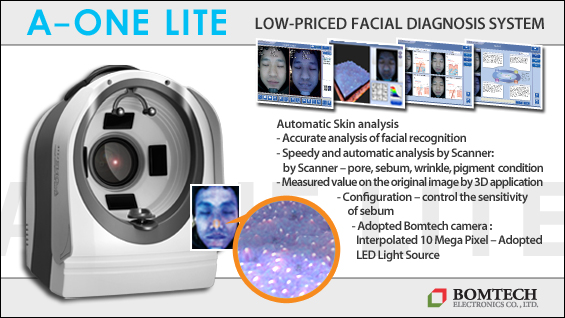▶ Previous Artlcle : #1-1. Introduction to Laser
Lasers used at my practice include Acupulse (Lumenis) and CO₂RE (Candela). Acupulse is a CO₂ laser equipped with a high-precision scanner. I have been using an early model of Sharpran 20C, 30C for about 15 years. These devices have long been an important part of my practice as they allow precise and consistent ablation of skin lesions. With adequate thermocoagulation, these lasers can effectively destroy mole tissues without excessive ablation. The outlying protrusions of the mole are not pronounced due to thermocoagulation of neighboring tissues.
CO₂RE is another type of scanned CO₂ laser. A scanner installed in the machine facilitates more convenient and safer use of the handpiece. Scanning using a high wattage and short pulse duration induces mild thermocoagulation, This allows very precise control of the ablated area. The two lasers can be chosen based on the desired degree of thermocoagulation. They share the advantage of high-performance scanner, and flexible control of the power output, irradiation area and intensity of ablation.
These two lasers have another benefit of fractional function. The efficacy of this function will be discussed in detail at another time.
When it comes to treatment of melasma, Japanese patients and doctors both tend to be conservative and passive (They are happy with only slightly lighter outcomes. They prefer less crusts even if it means lower efficacy. They want only subtle changes so that others would not notice.). Therefore, flash-lamp or IPL are often deemed sufficient for melasma treatment. The Q-switched laser is the most frequently used modality in this regard. There are only two Japanese manufacturers of Q-switched ruby laser. Worldwide, there are only five manufacturers of Q-switched ruby laser. It is interesting that two of these manufacturers (JMEC and NIIC) market their products only in Japan. Their lasers have been approved by the Ministry of Health, Labour and Welfare and are indicated for conditions included in the healthcare coverage. Therefore, the clinicians’ choices are narrowed to these two devices.
[Advertisement] A-One LITE(Facial Diagnosys System) – Manufacturer: BOMTECH(www.bomtech.net)
Candela has marketed various products in Japan since a long time ago. Candela is a trusted brand with a large market share. If one wants to veer away from ruby lasers due to regulatory limitations, Q-switched alexandrite laser (old model: ALEX Laser) can be used.
Doctors who do not use Q-switched ruby laser or alexandrite laser use KTP laser, a second harmonic generation of Nd:YA or long pulsed alexandrite laser for hair loss.
I use Candela’s Alex TriVantage and Quantelderma’s SINON for treatment of melasma.
Alex TriVantage is a Q-switched laser with three wavelengths of alexandrite, Nd:YAG, and KTP. It can be used in lesions of varying depth from those on the surface to deeper layers. It can oscillate alexandrite laser at 5Hz, which allows it to tackle extensive regions without complications. PLTL/DL-1, ALEX LASER, and third generation Alex TriVantage have few malfunctions and stable output making them safe in various types of treatments.
SINON is a Q-switched ruby laser with Gaussian beam and is very precise. Installing the Gold tip, which is also called Soft spot, maintains precision and reduces risk. It is often used for smaller lesions.
The key to treating lentigo senilis is consistent irradiation at the lowest adequate output. The risk of PIH is reported to be about 40% in Japanese patients. The doctor should explain the risk to the patient before treatment. Post-treatment application of topical agents along with long-term observation of the outcome helps bring satisfactory results in most cases.
Age-related melasma is often complicated by other conditions, making Q-switched laser inadequate when applied alone. Japanese women regularly remove facial hair and tend to be meticulous about using sun screens. They also cleanse their face thoroughly to remove traces of facial products. Some even experience redness and dull complexion from friction and over-stimulation during cleansing. Excessive contact and friction can cause melanin deposition and inflamed melasma. Therefore, skin care such as moisturization and UV protection should complement laser therapy for better results. Melanin in the deeper dermal layers such as ADM should be also closely monitored.
Hair loss treatment using laser is competitively offered at aesthetic salons and spas rather than at doctors’ offices. Controversy remains over the legality of hair loss treatment with flash lamps. It is nonetheless widely practiced by non-experts. As many spas aggressively advertise ‘multiple procedures offered throughout a year for only 3,000 yen,’ not many doctors enter the heated market of laser hair loss treatment. This is lamentable as those without medical license can legally perform these procedures and hinder the healthy growth of the market.
I will discuss fractional laser and laser toning in detail at later opportunities.
Lastly, I would like to offer a few words on Korean laser manufacturers that enter the Japanese market. Korean manufacturers have low prices as their key advantage. Some companies, despite being a conglomerate, do not offer any post-sale updates or academic support to the users. Undoubtedly, the Japanese consumers view these companies as irresponsible and unprofessional. On the other hand, there are large Korean manufacturers that provide affordable devices as well as conscientious updates on scientific information. They take one step further and even hire seasoned Japanese employees. I personally believe that Korean products have good quality and feel that the Korean manufacturers need to review their strategy in the Japanese market. Korean devices with high performance and low prices will be widely appreciated in Japan if they also come with information updates and active academic support.
-To be continued-




















